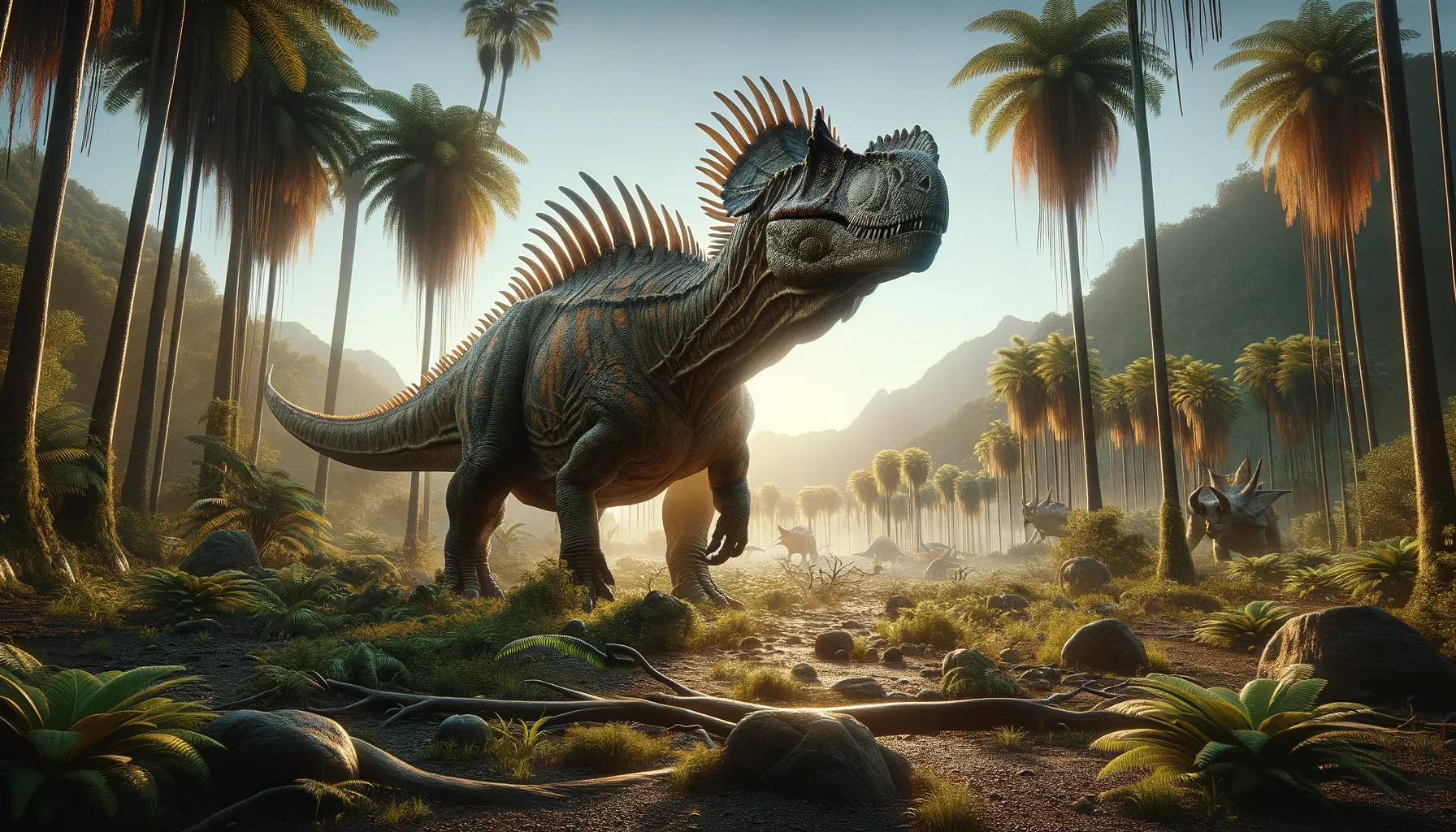
Gastonia
Armored titan of the Cretaceous landscape.
Period
Cretaceous
Length
Reached lengths of around 5 meters.
Height
Stood about 1 meter tall.
Weight
Weighed up to 1.9 tonnes.
Gastonia was a heavily armored dinosaur known for its spiked body and robust build. It lived during the Early Cretaceous period, roughly 125 million years ago. This herbivorous dinosaur was part of the ankylosaur family, known for being low-slung and heavily protected. Its distinctive feature was the bony armor that covered its back, providing defense against predators. Gastonia's fossils give us a glimpse into the diverse ecosystems of its time.
Diet
Gastonia was an herbivore, feeding primarily on low-lying plants such as ferns and cycads. Its beak-like mouth allowed it to clip vegetation efficiently, making it well-suited for grazing in its environment.
Hunting
As an herbivore, Gastonia did not hunt. Instead, it likely spent much of its time foraging for plants, moving slowly through its environment to reach various food sources.
Environmental challenges
Gastonia faced environmental challenges such as competition for food with other herbivores. Natural predators like large theropods were also a threat, but its armored body served as protection. Climatic changes during the Cretaceous might have affected the availability of its plant-based diet, requiring adaptation and migration to survive.
Speed
Slow, due to its heavy armor and low limbs.
Lifespan
Likely several decades, considering its size.
First discovery
Found in Utah in the early 1990s.
Fun Facts
- Gastonia was a plant-eating dinosaur that lived during the Early Cretaceous period, about 125 million years ago.
- It is well-known for its impressive array of armor, with bony plates and spines covering its back for protection.
- Gastonia was relatively small compared to other dinosaurs, measuring about 15 to 20 feet long.
- Despite its size, it was built like a mini tank, with its sturdy frame and heavy armor making it a formidable opponent for predators.
- The species was discovered in Utah, USA, and is named after paleontologist Robert Gaston who played a key role in its excavation.
- Unlike some other armored dinosaurs, Gastonia had a unique tail design that included a flat club used for defense.
- Fossils of Gastonia often include beautifully preserved armor plates, providing important insights into its appearance and defense mechanisms.
Growth and Development
Gastonia's growth was marked by its development of bony armor plates as it matured. These protective structures offered increased defense against predators. Juveniles were likely more vulnerable until their armor fully developed. Growth rates were probably influenced by environmental conditions and availability of food resources.
Habitat
Gastonia lived in a variety of environments, ranging from forests to open plains. It thrived in regions with abundant plant life, providing sufficient resources for grazing. The presence of water bodies would have been crucial, along with a mild climate that supported diverse vegetation types.
Interaction with other species
Gastonia likely shared its habitat with a range of herbivores and carnivores. While adult Gastonia were well-armored, younger individuals might have been prey for predators. It might have lived in groups for better protection, with potential interactions centered around resource competition and defense strategies.
Natural lifespan
Gastonia could have lived for several decades if not threatened by predators.
Reproduction
Gastonia, like many dinosaurs, likely reproduced by laying eggs. Nests were probably built on the ground, with multiple eggs in each clutch. Parental care strategies are not well understood, but it is possible that some level of care existed to safeguard the young from predators.
Social behaviour
Gastonia may have exhibited some level of social behavior, possibly moving in groups. Such behavior could have aided in defense against predators. Social interactions might have included communication for foraging or alerting others to potential dangers.
Fossil locations
Fossils of Gastonia have been primarily found in the Cedar Mountain Formation of Utah, USA. These fossilized remains have provided significant insights into the species' anatomy and ecological role. The discovery in the early 1990s helped expand the understanding of ankylosaurid diversity during the Cretaceous period.
